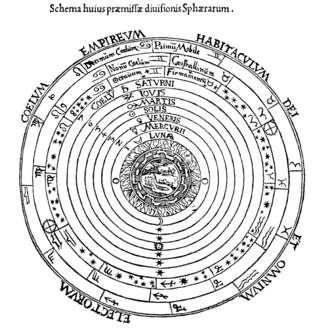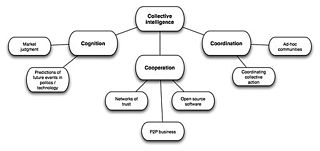
Semantics is the study of reference, meaning, or truth. The term can be used to refer to subfields of several distinct disciplines, including philosophy, linguistics and computer science.
Semiotics is the systematic study of sign processes (semiosis) and meaning-making. Semiosis is any activity, conduct, or process that involves signs, where a sign is defined as anything that communicates something, usually called a meaning, to the sign's interpreter. The meaning can be intentional, such as a word uttered with a specific meaning; or unintentional, such as a symptom being a sign of a particular medical condition. Signs can also communicate feelings and may communicate internally or through any of the senses: visual, auditory, tactile, olfactory, or gustatory (taste). Contemporary semiotics is a branch of science that studies meaning-making and various types of knowledge.

Umberto Eco was an Italian medievalist, philosopher, semiotician, novelist, cultural critic, and political and social commentator. In English, he is best known for his popular 1980 novel The Name of the Rose, a historical mystery combining semiotics in fiction with biblical analysis, medieval studies and literary theory, as well as Foucault's Pendulum, his 1988 novel which touches on similar themes.
Reason is the capacity of applying logic consciously by drawing conclusions from new or existing information, with the aim of seeking the truth. It is associated with such characteristically human activities as philosophy, science, language, mathematics, and art, and is normally considered to be a distinguishing ability possessed by humans. Reason is sometimes referred to as rationality.
In philosophy, rationalism is the epistemological view that "regards reason as the chief source and test of knowledge" or "any view appealing to reason as a source of knowledge or justification", often in contrast to other possible sources of knowledge such as faith, tradition, or sensory experience. More formally, rationalism is defined as a methodology or a theory "in which the criterion of truth is not sensory but intellectual and deductive".

A worldview or a world-view or Weltanschauung is the fundamental cognitive orientation of an individual or society encompassing the whole of the individual's or society's knowledge, culture, and point of view. A worldview can include natural philosophy; fundamental, existential, and normative postulates; or themes, values, emotions, and ethics.
Experience refers to conscious events in general, more specifically to perceptions, or to the practical knowledge and familiarity that is produced by these processes. Understood as a conscious event in the widest sense, experience involves a subject to which various items are presented. In this sense, seeing a yellow bird on a branch presents the subject with the objects "bird" and "branch", the relation between them and the property "yellow". Unreal items may be included as well, which happens when experiencing hallucinations or dreams. When understood in a more restricted sense, only sensory consciousness counts as experience. In this sense, experience is usually identified with perception and contrasted with other types of conscious events, like thinking or imagining. In a slightly different sense, experience refers not to the conscious events themselves but to the practical knowledge and familiarity they produce. In this sense, it is important that direct perceptual contact with the external world is the source of knowledge. So an experienced hiker is someone who actually lived through many hikes, not someone who merely read many books about hiking. This is associated both with recurrent past acquaintance and the abilities learned through them.

The Critique of Pure Reason is a book by the German philosopher Immanuel Kant, in which the author seeks to determine the limits and scope of metaphysics. Also referred to as Kant's "First Critique", it was followed by his Critique of Practical Reason (1788) and Critique of Judgment (1790). In the preface to the first edition, Kant explains that by a "critique of pure reason" he means a critique "of the faculty of reason in general, in respect of all knowledge after which it may strive independently of all experience" and that he aims to reach a decision about "the possibility or impossibility of metaphysics". The term "critique" is understood to mean a systematic analysis in this context, rather than the colloquial sense of the term.
Clarence Irving Lewis, usually cited as C. I. Lewis, was an American academic philosopher. He is considered the progenitor of modern modal logic and the founder of conceptual pragmatism. First a noted logician, he later branched into epistemology, and during the last 20 years of his life, he wrote much on ethics. The New York Times memorialized him as "a leading authority on symbolic logic and on the philosophic concepts of knowledge and value." He was the first to coin the term "Qualia" as it is used today in philosophy, linguistics, and cognitive sciences.

The Critique of Practical Reason is the second of Immanuel Kant's three critiques, published in 1788. It follows on from Kant's first critique, the Critique of Pure Reason and deals with his moral philosophy. While Kant had already published one significant work in moral philosophy, the Groundwork of the Metaphysic of Morals (1785), the Critique of Practical Reason was intended to both cover a wider scope and place his ethical views within the larger framework of his system of critical philosophy.
Cognitive functions, also referred to as psychological functions, as described by Carl Jung in his book Psychological Types, are particular mental processes within a person's psyche that are present regardless of common circumstance. This is a concept that serves as one of the foundations for his theory on personality type. In his book, he noted four main psychological functions: thinking, feeling, sensation and intuition. He introduced them with having either an internally focused (introverted) or externally focused (extraverted) tendency which he called "attitudes". He also categorizes the functions as either rational or irrational.
In semiotics, the commutation test is used to analyze a signifying system. The test identifies signifiers as well as their signifieds, value and significance.
Decoding, in semiotics, is the process of interpreting a message sent by an addresser (sender) to an addressee (receiver). The complementary process – creating a message for transmission to an addressee – is called encoding.
"Critique of the Kantian philosophy" is a criticism Arthur Schopenhauer appended to the first volume of his The World as Will and Representation (1818). He wanted to show Immanuel Kant's errors so that Kant's merits would be appreciated and his achievements furthered.

Nous, or Greek νοῦς, sometimes equated to intellect or intelligence, is a concept from classical philosophy for the faculty of the human mind necessary for understanding what is true or real.

In Kantian philosophy, a transcendental schema is the procedural rule by which a category or pure, non-empirical concept is associated with a sense impression. A private, subjective intuition is thereby discursively thought to be a representation of an external object. Transcendental schemata are supposedly produced by the imagination in relation to time.
The analytic–synthetic distinction is a semantic distinction used primarily in philosophy to distinguish between propositions that are of two types: analytic propositions and synthetic propositions. Analytic propositions are true or not true solely by virtue of their meaning, whereas synthetic propositions' truth, if any, derives from how their meaning relates to the world.

Common sense is sound, practical judgement concerning everyday matters, or a basic ability to perceive, understand, and judge in a manner that is shared by nearly all people.
Visual semiotics is a sub-domain of semiotics that analyses the way visual images communicate a message.

The values that a person holds may be personal or political depending on whether they are considered in relation to the individual or to society. Apart from moral virtue, examples of personal values include friendship, knowledge, beauty etc. and examples of political values, justice, equality and liberty. This article will outline some current ideas relating to the first group – personal values. It will begin by looking at the kinds of thing that have value and finish with a look at some of the theories that attempt to describe what value is. Reference will be made solely to Western sources although it is recognised that many, if not all, of the values discussed may be universal.








